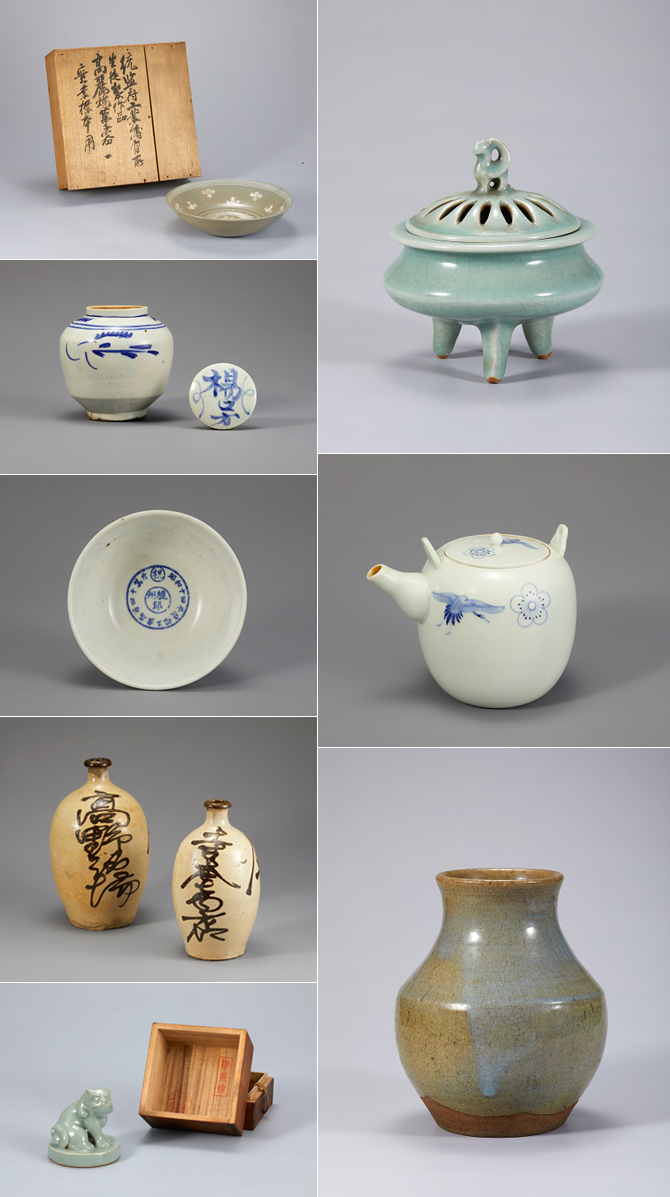서브메뉴
본문내용
- Duration : May 22 (Fri.) – Nov. 1 (Sun.), 2020
- Place : Special Exhibition Gallery, Gyeonggi Ceramic Museum
- Composition of exhibition : The exhibition examines Korean ceramics in modern times (from the time when the royal kilns were privatized to when the nation was restored to independence) through 150 works of ceramics produced and artifacts excavated from kiln sites on the Korean peninsula.
About the exhibition
This exhibition sheds light on modern ceramics on the whole with focus on ceramics produced and distributed from the closing years of the Joseon period, after opening of ports, through the Great Han Empire period, and to the end of the Japanese occupation, and it looks at the how ceramics as industrial output and art objects came into being and underwent change thereafter.
This exhibition is divided into 2 parts; Part 1, Joseon Ceramics: From Handcrafts to Mass Production and Part 2, Age of Imperialism: From Ceramics for Use to Ceramics as Art.
Part 1 addresses the modernization of ceramics produced at the royal kilns when the kilns were privatized after the opening of the ports, and how ceramic production was modernized since then. By examining imported ceramics from Japan called ‘waesagi (“Japanese ceramics”)’, which flooded into the Korean market, industrial ceramics companies established with huge Japanese capital, and ceramics used for other purposes than tableware such as ceramic insulators, rice wine jars, and oil lamps, this exhibition ruminates on the life of modern society at the time.
The exhibition also presents artifacts unearthed from kiln sites in different regions trying to carry on the legacy of tradition; introduces ceramics companies established in the 1940s with Korean capital, such as Haengnamsa and Miryang Pottery; and shows the first line of ceramics produced by Korean companies that built the foundation for contemporary industrial ceramics today.
Part 2, Age of Imperialism: From Ceramics for Use to Ceramics as Art, looks at how replicas of Goryeo celadon, which came into being when Japanese technology and capital penetrated into the country, and the determination of the Koreans to restore traditional ceramics as Korea entered into the 20thcentury gaverise to the concept of ceramics as creative fine art.Replicas of Goryeo celadon produced by the Yiwangjik Craftwork Manufactory, Samhwa Goryeoso and Hanyang Goryeoso brought with them a new perspective towards ceramics, leading to mass production of souvenirs and creative works of ceramics. Potters who engaged in reproduction of celadon at this time, such as Yu Geun-hyeong and Hwang In-chun, whose works were presented at the Joseon Fine Art Exhibition, became key figures in traditional ceramics, which led Korean ceramic art after national liberation when ceramics was taught for the first time at universities.
We hope this exhibition will be an opportunity to rediscover the values of Korean ceramics, which experience times of great turbulence, and to look at ceramics once again as objects that embody history.














 Ceramic Tour
Ceramic Tour































